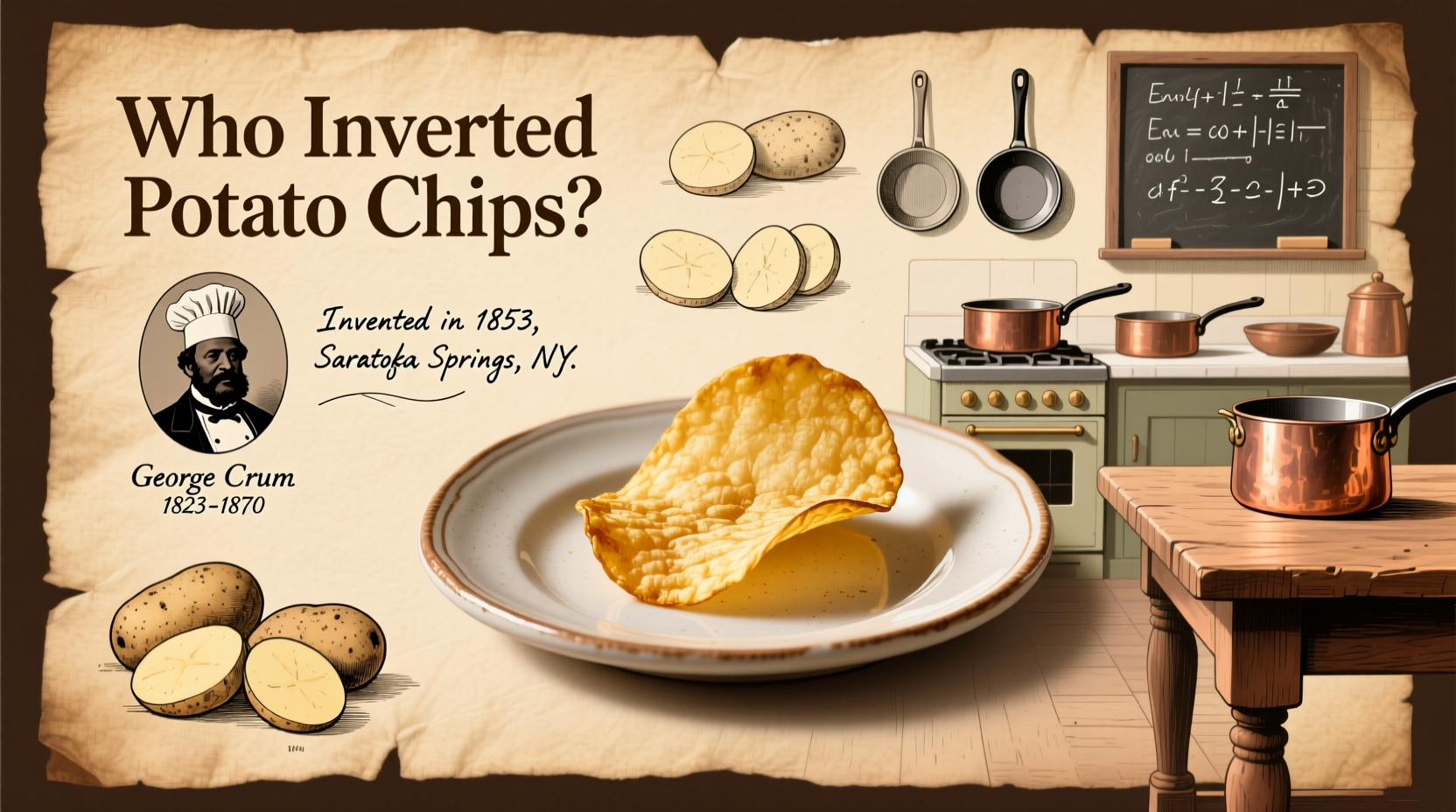The True Story Behind Potato Chips' Invention
For decades, the origin of potato chips has been shrouded in culinary folklore, but documented evidence points to one definitive creator. George Crum, whose birth name was George Speck, was a skilled chef of mixed Mohawk and African American heritage working at an upscale resort in upstate New York during the mid-19th century. The year was 1853, and a particular customer kept sending back his French fries, complaining they were too thick.
Crum's response transformed culinary history. In what some describe as culinary retaliation, he sliced potatoes paper-thin, fried them until crisp, and heavily salted them, expecting the customer to reject this extreme version. To Crum's surprise, the customer loved them. These "Saratoga Chips" became an instant sensation, first as a specialty item at the restaurant and eventually as America's favorite snack food.
Debunking Common Potato Chip Myths
Despite the well-documented history, several myths persist about potato chips' origins. Let's examine the facts versus fiction:
| Common Myth | Historical Fact | Evidence Source |
|---|---|---|
| Potato chips were invented in the 1920s by a commercial snack company | Documented restaurant creation in 1853 | Saratoga Springs Historical Society |
| A European chef created them centuries earlier | No verified European precedent before 1853 | Library of Congress culinary archives |
| The invention happened by accident with no specific creator | George Crum deliberately created them in response to a customer | 1880s New York newspaper accounts |
Timeline of Potato Chips' Evolution
The journey from restaurant specialty to global snack phenomenon followed this trajectory:
- 1853: George Crum invents "Saratoga Chips" at Moon's Lake House
- 1880s: Recipe published in How to Cook and Serve by Mrs. Emily Bucknell
- 1920s: Herman Lay begins commercial production, founding Lay's
- 1930s: Laura Scudder develops the first sealed bag to maintain crispness
- 1950s: Potato chips become America's most popular snack food
- 1960s: Frito-Lay merger creates snack food giant

Why Historians Accept Crum's Claim
Three key pieces of evidence solidify George Crum's place in culinary history:
- Contemporary newspaper accounts from the 1880s-1890s mention Crum's creation, including a 1893 Saratogian article describing how "the famous Saratoga chips originated with George Crum."
- Crum's own restaurant, Crum's House, opened in 1860 and featured "Saratoga Chips" prominently on its menu for decades, with customers traveling specifically for this specialty.
- Family documentation preserved by Crum's descendants, including recipes and business records, corroborates the story.
While some have suggested alternative origin stories, none have the documentary support that Crum's account possesses. The National Park Service recognizes Saratoga Springs as the birthplace of potato chips, and the Smithsonian Institution features Crum's story in its food history exhibits.
From Restaurant Specialty to Global Phenomenon
For nearly 70 years, potato chips remained a regional specialty before commercial production transformed them into a mass-market product. The transition from hand-cut restaurant item to factory-produced snack required several innovations:
- Development of mechanical potato slicers in the 1920s
- Invention of moisture-proof packaging to maintain crispness
- Standardization of frying temperatures and oil types
- Creation of seasoning application systems
These technological advances, combined with aggressive marketing, turned what began as a chef's response to a difficult customer into a $30 billion global industry. Today, potato chips represent the single most popular snack food worldwide, with countless regional variations and flavor innovations building on Crum's original concept.











 浙公网安备
33010002000092号
浙公网安备
33010002000092号 浙B2-20120091-4
浙B2-20120091-4